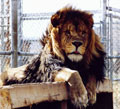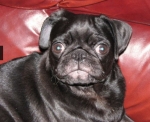Mtnviewer wrote:I wonder if positional apneas are more common that we consider (and for some the "main" problem to induce apneas) as I rarely read folks being concerned about dealing with body & head position, other than by ever increasing the PAP pressures when the AHI goes up or one feels tired?
I believe this tendency toward supine apnea is because the tongue and other tissues are pushed back due to gravity, obstructing the airway.
In the book
Sleep Apnea: The Phantom of the Night, by T. Scott Johnson, M.D. et al., on page 134 it states:
"Some patients snore only when lying on their backs. Apneas are usually more frequent and severe when patients sleep on their backs. One-third to one-half of patients exhibit sleep apneas only on their backs. These individuals are typically less obese and have less severe obstructions."
The authors go on to mention devices to prevent back-sleeping, such as a tennis ball placed into a pocket sewn on the back of a t-shirt, a backpack with a large foam cube or volleyball, audible alarms that alert the patient when he/she rolls onto their back, and straps to hinder rolling completely.
I learned during my sleep studies that almost all my events occur when I'm on my back. I used this homemade contraption for a few weeks before starting CPAP. It looks a little silly (and some say a bit naughty), but it did keep me from rolling onto my back during the night. I know that you've said that tennis balls didn't work for you, Mtnviewer, but perhaps this idea could be adapted somehow?

I cut a hole in the bottom of a tube sock, guided an old belt through the sock, put in two tennis balls, and secured the tennis balls in place with three rubber bands. I wore it wrapped around my
upper body, just under my armpits, with the tennis balls on my upper back. Another position may work better for someone else, but it worked great for me! It didn't cost me anything since I had all the materials.
~ DreamOn
















